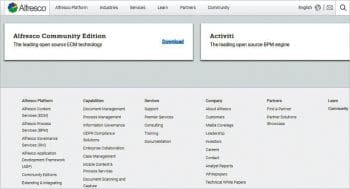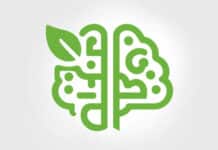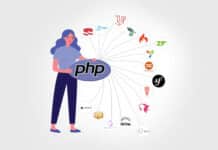Enterprise content management (ECM) is the technology used to capture, manage, store, preserve, and deliver content and documents related to organisational processes. ECM plays a big role in the safety and security of enterprise documentation, and can be very well managed using open source tools.
The backup and recovery of files includes repository management with secured tools and libraries so that the organisation’s confidential documents can be preserved, used and transmitted securely. Enterprises must have secured and effective software with the right tools and technologies, so that their files and documents can be stored in a privacy-aware environment. The proprietary as well as open source software distributions used by the corporate and academic organisations include storage wallets with communication options. By using communication tools in these software products, users can send and receive files and documents for specific purposes. These software products act as an enterprise based private cloud that has all the data, files and documents relating to the organisation.
Often, these software tools can be used as enterprise resource management (ERM) tools, which include enterprise content management (ECM) and enterprise document management systems (EDMS). Such tools and software suites are used to share, distribute and preserve documents within the organisation. By using organisation-level documents repository management, the integrity and security of the digital assets of the firm or institution can be maintained.
For example, if an employee is willing to send a confidential document to a higher authority or boss, the former can directly share that file using these software tools rather than send that file via email. In this way, the overall communication is logged and recorded with the timestamp and the entire history and details of the communication, for long term reference and use.
Digital assets management (along with knowledge management) is one of the key goals that is achieved using these software products. Such tools and products are also used for knowledge transfer within an organisation so that the induction and training of new employees can be done with minimum time loss, and with explanations of the organisation’s structure, processes and workflow. Without such tools, the induction of new employees becomes difficult because of the huge documentation process. Tools with EDMS and ECM ensure proper documentation and deliver the overall processes to employees in particular units or departments.


With the adoption of such EDMS and ECM based tools, various technologies and solutions are used to integrate the following activities.
- Capturing real-time data in multiple formats such as:
- Images
- Multimedia including video
- Rich text format
- PDFs
- Spreadsheets
- Presentations and slide shows
- Word processing documents
- XML
- Creation of data
- Transformation of data
- Indexing and aggregation with grouping
- Secured storage and repository management
- Encrypted storage
- Retrieving and fetching data in a secured way
- Creation of information assets in multiple formats
- Analysis of the properties of data
- Report-generation in multiple formats
- Form processing for accepting dynamic input
- Enterprise workflow management
A list of free tools for enterprise content and document management is given in Table 1.  Other ECM tools are FileRun, Kimios, LogicalDOC, Maarch Courrier DMS, etc.
Other ECM tools are FileRun, Kimios, LogicalDOC, Maarch Courrier DMS, etc.
The features of enterprise content and document management tools are:
- Minimise redundancy or duplication
- Free records management
- Support for communication using in-built mail and document transmission
- Improved and effective data management with a deep knowledge base
- Optimisation of storage spaces with detailed information repository management
- Support for bar code and quick response (QR) code
- Support for re-usage of data over the long term
- Improvement of the documentation and regulatory processes for ISO standards and related certification
- Enhanced classification and indexing of data files and documents for access to multiple departments and units of the organisation
- Access to data using multiple devices including mobile phones, tablets, etc
- Automated business workflow and processes
- Reduced delays and downtime
- Dynamic compression of large files
- Capturing of metadata so that deep evaluation and searching of documents can be done with higher degrees of accuracy
- Management of subscriptions and alerts associated with specific features of the documents
- Version control with the update of revisions in the repository
- In-built support for the multiple viewers of documents so that any type of file or document can be viewed and visualised on the software itself
- Extraction of historical records and tracing the documents with different options in advanced search
- Automation of tasks and scheduling for deadline based jobs
- Integration of electronic signatures for authentication and secured access
- Roles, permissions and privileges management
- Dynamic integration of scanned files and extraction of text using optical character recognition (OCR)
- In-built malware control mechanisms including packets tracer and antivirus software
Popular enterprise content and document management tools
OpenKM: This tool is powerful, multi-functional and can be used for enterprise content and document management across multiple applications used in different units and departments of an organisation. The tool can import the files and documents from any digital source or streaming channel, so that real-time data can be collected. It is ideal in corporate, academic or personal environments to keep records in a secured repository for further use.
OpenKM is typically used for knowledge management and transfer, so that the deep knowledge about any unit or department in the organisation can be accessed at any time. The tool offers options for records management, organisation workflows, automation of tasks, corporate communication modules, secured file management, and many others. In addition, OpenKM has the capability to build customised applications as per the requirements of an organisation.


Alfresco: This provides multi-layered security for documents management with the integration of access permissions on different types of files and documents. It has the full roll-back features so that any accidental removal of data can be recovered by the administrators. In addition, Alfresco provides simple but highly effective records management so that multiple departments and sections of the organisation can communicate in a secure manner.
Alfresco is more focused towards data management for large enterprises with multiple options for multimedia files management, content repository, document management, Web content management, etc. It is a cross-platform software application that can be executed on assorted operating systems. There are numerous add-on plugins and modules for multiple applications that can be attached with an Alfresco installation.
The community edition of Alfresco can be downloaded from https://www.alfresco.com/products/community/download. The software provides the options to create users with different rights on the documents. In addition, files and documents of different formats can be processed in the software.
OpenDocMan: OpenDocMan is free and multi-functional document management software. It is written in PHP and can be customised for the modules as per the requirements of the organisation. OpenDocMan can be installed and deployed on any traditional Web server with PHP for scripting and customisation. Using this DMS, the files can be directly uploaded without the need of FTP. In addition, there is an in-built installer for different plugins and additional modules.
Support for multiple international and regional languages is available so that the content can be directly translated from one language to another without any complexities. OpenDocMan provides a full-fledged Web based interface so that it can be deployed on the cloud for remote access and on multiple devices.
Any type of document can be uploaded and indexed in OpenDocMan with the allocation of permissions, for the security and authentication of confidential documents.
The admin panel of OpenDocMan includes options to manage multiple branches in the organisation including users, departments, categories, files, roles, etc. The individual files and documents can be associated with the specific roles and rights of users for secured access.

SeedDMS: This is another powerful EDMS. SeedDMS provides a Web based interface for cloud integration and ‘anywhere’ access on multiple devices and Web clients. It has a base of PHP, SQLITE and MySQL, and can be installed on any type of platform like Windows, Mac or Linux. SeedDMS is entirely compatible with LetoDMS, its predecessor.
SeedDMS provides assorted functions and features for the storage and retrieval of documents. These include meta-data management, advanced search, workflow management, files conversion, full text search and many others.
Kimios: Kimios DMS is a lightweight but fast document management system that offers secured and dynamic storage for an organisation’s documents, with deep search based indexing and bookmarking for advanced search and export to different formats. Using Kimios, the complete life cycle of the documents can be managed with versioning control.
Kimios delivers a customised but highly effective search engine for the identification of files and documents from different locations. In addition, the management of user rights and privileges is very effective, with the secured delivery of documents to other users. Kimios provides desktop integration with installation capabilities on multiple platforms. The capability to drag-and-drop files to the working panel adds to the user friendly nature of the software.

Scope for adoption
The adoption of specific document and content management systems entirely depends on the type and size of the organisation. For large enterprises, Alfresco or OpenKM are popular as these can handle Big Data files. For small and medium sized organisations, OpenDocMan, Kimios, SeedDMS or similar software applications can be used. These are fully customisable software tools that can be enhanced as per the requirements of various departments in the organisation. Universities and academic institutes can also install and work with such software tools to keep documents secure and to be able to transmit them via private ERP.












































































